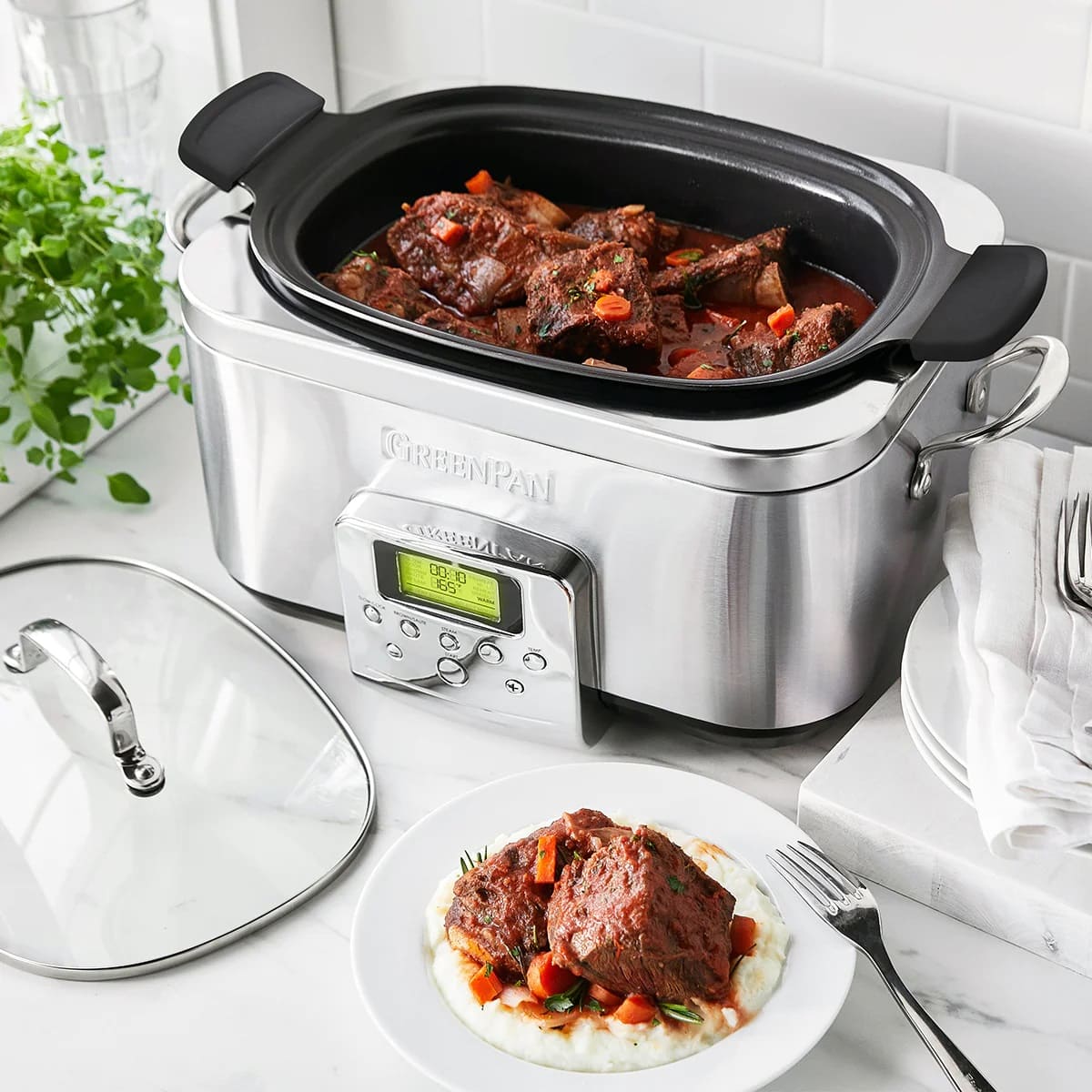

Articles
How To Cook Meat In A Slow Cooker
Modified: October 19, 2024
Learn how to cook delicious meat dishes using a slow cooker with these informative articles. Discover tips, recipes, and techniques to create mouthwatering meals.
(Many of the links in this article redirect to a specific reviewed product. Your purchase of these products through affiliate links helps to generate commission for Storables.com, at no extra cost. Learn more)
Introduction
Welcome to the world of slow cooking, where tender, succulent meat is just a few hours away. Cooking meat in a slow cooker is not only convenient, but it also allows for the flavors to meld together, resulting in delicious and melt-in-your-mouth dishes. Whether you’re a seasoned chef or a beginner in the kitchen, using a slow cooker to cook meat is a foolproof way to achieve fantastic results.
In this article, we will take you through the step-by-step process of selecting the right cut of meat, preparing it for slow cooking, adding flavors with various seasonings and marinades, cooking times and temperatures, tips for achieving tender and juicy meat, and finally, how to test for doneness. By the end, you’ll be equipped with the knowledge and confidence to cook meat in a slow cooker like a pro.
So, let’s dive in and discover the art of slow cooking meat.
Key Takeaways:
- Slow cooking meat in a slow cooker is a foolproof way to achieve tender, succulent dishes. From choosing the right cut to adding flavors and testing for doneness, you’ll be equipped to cook like a pro.
- With the right preparation and cooking techniques, slow-cooked meat can result in mouthwatering, flavorful dishes. Experiment with different cuts, flavors, and seasonings to create unforgettable meals.
Read more: How To Keep Hamburgers Warm In A Slow Cooker
Choosing the Right Cut of Meat
When it comes to cooking meat in a slow cooker, choosing the right cut is key to achieving tender and flavorful results. Slow cooking is ideal for tougher cuts of meat that have more connective tissue, as the long cooking process helps break down the tissue, resulting in tender meat that falls apart with ease.
Some popular cuts of meat that are perfect for slow cooking include beef chuck roast, pork shoulder, lamb shanks, and chicken thighs. These cuts are known for their marbling and collagen content, which creates moist and flavorful meat when cooked low and slow.
When selecting your meat, look for cuts that have a good amount of fat and connective tissue, as this will ensure that the meat stays moist and tender during the long cooking process. Additionally, consider the size of the meat. Larger cuts, like a whole roast or whole chicken, will require longer cooking times compared to smaller cuts.
It’s also worth noting that the quality of the meat matters. Opt for grass-fed, organic, or pasture-raised options whenever possible, as they tend to have superior flavor and tenderness.
Lastly, think about the flavor profiles you enjoy. Different cuts of meat have distinct flavors and textures, so choose one that complements your desired dish. For example, beef chuck roast is well-suited for hearty stews and roasts, while pork shoulder is excellent for pulled pork or carnitas.
By selecting the right cut of meat, you’ll be setting yourself up for success in creating delicious slow-cooked dishes that will impress your taste buds.
Preparing the Meat
Before you start cooking your meat in a slow cooker, it’s important to properly prepare it to ensure optimal flavor and texture. Here are some steps to follow:
1. Trim excess fat: While fat adds flavor, too much can make your dish greasy. Trim any excessive fat from the meat, leaving just a thin layer for flavor and moisture.
2. Season with salt and pepper: Generously season the meat with salt and pepper on all sides. This helps to enhance the flavors and adds a nice crust to the meat.
3. Optional browning: If time allows, consider browning the meat before adding it to the slow cooker. This step adds an extra depth of flavor and creates a beautiful caramelization on the meat’s surface. Simply heat a skillet over medium-high heat, add a small amount of oil, and sear the meat on all sides until browned.
4. Pat dry: Before adding the meat to the slow cooker, make sure to pat it dry with paper towels. This removes any excess moisture, allowing the meat to brown and develop a richer flavor.
By following these simple steps, you’ll be well on your way to preparing your meat for a perfectly cooked slow cooker dish. Remember, a little preparation goes a long way in creating tantalizing flavors and tender meat.
Seasoning and Marinades
Seasoning and marinades are essential components in bringing out the best flavors in your slow-cooked meat. They add depth, aroma, and complexity to your dishes. Here are some tips on how to season and marinate your meat:
1. Dry Rub: Create a flavorful dry rub by combining herbs, spices, salt, and pepper. Rub the mixture all over the meat, making sure to coat it evenly. This technique works particularly well with large cuts of meat like beef roasts or pork shoulders. Allow the meat to sit with the dry rub for at least an hour (or overnight in the refrigerator) to allow the flavors to penetrate the meat.
2. Liquid Marinade: Another option is to marinate your meat in a liquid mixture. This can include combinations of oil, vinegar, citrus juice, soy sauce, Worcestershire sauce, and various herbs and spices. Place the meat and marinade in a zip-top bag or a shallow dish, making sure the meat is fully coated. Let it marinate for several hours or overnight in the refrigerator. Remember to discard the marinade once you’re ready to cook the meat.
3. Flavor Enhancers: Consider adding extra flavor enhancers like minced garlic, fresh herbs, or even a splash of your favorite alcohol (such as red wine, bourbon, or beer) to your seasoning or marinade. These additions can elevate the taste profile of your dish and create a memorable dining experience.
The choice of seasoning and marinade is highly customizable and depends on your personal preferences and the type of dish you are preparing. Whether you prefer bold and spicy flavors or a more subtle and aromatic profile, experimenting with various herbs, spices, and liquids will allow you to create unique and exciting flavors.
Remember to adjust the amount of seasoning and marinade based on the size and type of meat you are using. The goal is to enhance the flavors of the meat without overpowering it.
Now that you’ve seasoned and marinated your meat, it’s time to move on to the next step: adding it to the slow cooker.
Adding the Meat to the Slow Cooker
Now that you have prepared and seasoned your meat, it’s time to transfer it to the slow cooker for the magic to happen. Here’s how to add the meat to the slow cooker:
1. Select the right size: Ensure that your slow cooker is large enough to accommodate the size of the meat you are cooking. You don’t want the meat to be overly crowded or squished into the cooker, as this can affect the cooking time and overall tenderness.
2. Place the meat in the center: Position the meat in the center of the slow cooker, allowing ample space for the heat to circulate around it. This ensures even cooking and prevents any potential hot spots.
3. Add additional ingredients: Consider adding complementary ingredients to enhance the flavor of the meat. This can include chopped onions, garlic, vegetables, herbs, or even a splash of broth or wine. These additions will infuse the meat with additional flavors as it cooks.
4. Avoid overcrowding: Avoid overcrowding the slow cooker with too many ingredients. Overfilling can lead to uneven cooking and may result in a mushy texture. If you have additional ingredients, such as vegetables or potatoes, consider placing them around the meat rather than on top.
5. Do not lift the lid unnecessarily: Once the meat is in the slow cooker, avoid the temptation to continuously open the lid and check on its progress. This releases valuable heat and can significantly increase the cooking time.
By carefully placing the prepared meat in the slow cooker and adding any additional ingredients, you are setting the stage for a deliciously tender and flavorful dish.
Now that the meat is in the slow cooker, it’s time to determine the cooking time and temperature for perfect results.
For best results, sear the meat before adding it to the slow cooker to enhance flavor and texture. This step will also help to lock in the juices and create a delicious crust on the meat.
Read more: How A Slow Cooker Works
Cooking Times and Temperatures
Cooking times and temperatures are crucial factors in achieving perfectly cooked meat in a slow cooker. Here are some general guidelines to follow:
1. Low and slow: The beauty of using a slow cooker is the low and gentle heat that cooks the meat over an extended period. Typically, the low setting is recommended for slow cooking, as it allows the flavors to develop and the connective tissues to break down slowly. This results in tender, melt-in-your-mouth meat. However, if you’re short on time, you can use the high setting, but the cooking time will be significantly reduced.
2. Cooking times: The cooking time will vary based on the size and type of meat you’re cooking. As a general rule of thumb, plan for approximately 6-8 hours on low or 3-4 hours on high for most cuts of meat. However, larger cuts or tougher meats may require longer cooking times. It’s best to refer to specific recipes or consult cooking guides for accurate cooking times for your chosen meat.
3. Use a meat thermometer: To ensure that the meat is cooked to perfection, it’s always a good idea to use a meat thermometer to check the internal temperature. The USDA recommends cooking beef, pork, veal, and lamb to an internal temperature of at least 145°F (63°C) and poultry to 165°F (74°C). This ensures that the meat is safe to eat and eliminates any guesswork about doneness.
4. Adjust cooking times based on meat tenderness: Some cuts of meat, like chicken thighs or boneless pork ribs, are more forgiving and can be cooked for longer periods without becoming dry. However, more tender cuts, like filet mignon or boneless skinless chicken breasts, require shorter cooking times to prevent them from becoming tough or dry. It’s important to consider the tenderness of the meat when determining the cooking time.
Remember, these are general guidelines, and it’s always best to refer to specific recipes or the instructions provided with your slow cooker for more precise cooking times and temperature recommendations based on the meat you’re using.
As the meat cooks, tantalizing aromas will fill your kitchen, and you’ll be eagerly awaiting the tender and juicy meat that awaits. But before you indulge, there are a few tips to keep in mind to ensure your meat turns out as delicious as possible.
Tips for Tender and Juicy Meat
Want to achieve that perfectly tender and juicy meat in your slow cooker? Here are some tried and true tips to help you achieve mouthwatering results:
1. Brown the meat: If time allows, sear or brown the meat before adding it to the slow cooker. This step helps to lock in the flavors and create a beautiful crust on the meat’s surface. It adds depth and richness to the final dish.
2. Don’t overcook: While slow cooking is all about low and slow, it’s important not to overcook the meat. Overcooking can lead to dry and tough meat. Keep an eye on the cooking times and use a meat thermometer to check for doneness. Remove the meat from the slow cooker as soon as it reaches the desired internal temperature.
3. Avoid lifting the lid: Every time you open the slow cooker lid, you release valuable heat and extend the cooking time. Avoid the temptation to constantly check on the meat. Trust the process and let the slow cooker work its magic.
4. Keep the lid on: To ensure tender and juicy meat, resist the urge to remove the slow cooker lid during the cooking process. The trapped steam and moisture help to keep the meat moist and prevent it from drying out.
5. Add moisture: If you’re concerned about the meat drying out, you can add some additional liquid to the slow cooker. This can be in the form of broth, wine, or even water. The liquid will provide moisture throughout the cooking process, resulting in tender and juicy meat.
6. Let it rest: Once the meat is done cooking, allow it to rest for a few minutes before serving. This allows the juices to redistribute, resulting in a tender and succulent meat. Resting also gives you time to prepare any sides or garnishes.
By following these tips, you’ll be well on your way to achieving the most tender, juicy, and flavorful meat dishes from your slow cooker. So, get ready to savor each and every bite!
Testing for Doneness
Knowing when your slow-cooked meat is perfectly done is essential for achieving the best results. Here are a few methods to test for doneness:
1. Visual cues: One of the most common ways to check for doneness is by visually assessing the meat. For cuts like beef or pork, the meat should be tender and easily pull apart with a fork. It should also have a browned crust on the exterior. For poultry, the meat should be white and no longer pink in the center, with the skin turning golden and crispy.
2. Meat thermometer: Using a meat thermometer is the most accurate way to determine if your meat is cooked to the desired doneness. Insert the thermometer probe into the thickest part of the meat without touching any bones or the bottom of the slow cooker. Check the temperature reading to ensure that it has reached the recommended internal temperature for the specific type of meat you are cooking.
3. Texture test: Another way to check for doneness is by testing the texture of the meat. Using a fork or tongs, gently press down on the meat. If it feels tender and easily tears apart, it’s likely done. However, if it feels tough or resistant, it may need more time to cook.
It’s important to note that different cuts of meat will have different levels of doneness. For example, beef can be cooked to different levels of doneness, from rare to well-done, based on personal preference. The recommended internal temperatures for specific types of meat can be found in cooking guides or online resources.
Remember, it’s always better to slightly undercook the meat and let it rest, as it will continue to cook with residual heat and reach the desired level of doneness. Overcooking can result in dry and tough meat.
Now that your meat is perfectly cooked and ready to be enjoyed, it’s time to serve it up and savor the flavors.
Serving and Enjoying your Slow Cooked Meat
After patiently waiting for your slow-cooked meat to reach perfection, it’s time to present it beautifully and enjoy the delicious flavors you’ve worked so hard to create. Here are some tips on how to serve and enjoy your slow-cooked meat:
1. Rest the meat: Before cutting into or serving the meat, allow it to rest for a few minutes. This helps the juices distribute evenly, resulting in a more flavorful and tender meal. Cover the meat loosely with foil to help retain heat during the resting period.
2. Slice or shred: Depending on the type of meat and your desired serving style, you can either slice or shred it. Use a sharp knife or two forks to achieve thin slices or pull-apart shreds. This allows for easy portioning and a visually appealing presentation.
3. Serve with sides: Consider pairing your slow-cooked meat with complementary sides that enhance the flavors and create a well-rounded meal. For example, roasted vegetables, mashed potatoes, or a fresh salad can add a burst of color and texture to your plate. Choose sides that are not too overpowering, allowing the flavors of the meat to shine through.
4. Garnish and sauce: Enhance the presentation and flavors of your dish by adding a garnish or sauce. Fresh herbs, such as parsley, cilantro, or chives, can add a pop of freshness. Sauces like a tangy barbecue sauce, a savory gravy, or a zesty salsa can complement the meat and provide an extra layer of flavor.
5. Get creative with leftovers: If you have any leftovers, don’t let them go to waste. Slow-cooked meat makes fantastic leftovers that can be repurposed into other delicious dishes. Use the shredded meat in tacos, sandwiches, or wraps, or incorporate it into hearty soups or casseroles for a quick and flavorful meal later on.
6. Enjoy the flavors: Slow-cooking takes time and effort, so take the time to truly savor each bite. Slow-cooked meat often has a depth of flavors that intensify over time, creating a truly mouthwatering experience. Take note of the tenderness and juiciness of the meat and appreciate the delicious outcome of your cooking efforts.
Now that you have reached the final step of serving and enjoying your slow-cooked meat, sit back, relax, and relish in the delightful flavors and textures that you have created.
Read more: When To Add Carrots To Slow Cooker
Conclusion
Cooking meat in a slow cooker offers a myriad of benefits, including convenience, tenderness, and delicious flavors. By following the steps outlined in this article, you can confidently prepare and cook meat in your slow cooker like a seasoned chef.
Choosing the right cut of meat, properly preparing it, and adding the perfect seasonings and marinades are crucial for creating a mouthwatering dish. Taking the time to brown the meat, adjusting the cooking times and temperatures, and ensuring the meat is tender and juicy are key factors in achieving the best results. Testing for doneness and allowing the meat to rest are essential final steps in ensuring a flavorful and satisfying meal.
Remember, slow cooking is a versatile method that allows for endless possibilities. Experiment with different cuts of meat, flavors, and cooking techniques to find what works best for you. Whether you’re cooking up a savory beef stew, fall-off-the-bone ribs, or a succulent chicken dish, the slow cooker will become your go-to tool for creating tender and delicious meat dishes.
So, embrace the art of slow cooking, explore new flavors, and enjoy the rewarding experience of creating mouthwatering meals that will leave your taste buds longing for more. Get ready to savor every tender and flavorful bite of your slow-cooked masterpiece!
Frequently Asked Questions about How To Cook Meat In A Slow Cooker
Was this page helpful?
At Storables.com, we guarantee accurate and reliable information. Our content, validated by Expert Board Contributors, is crafted following stringent Editorial Policies. We're committed to providing you with well-researched, expert-backed insights for all your informational needs.
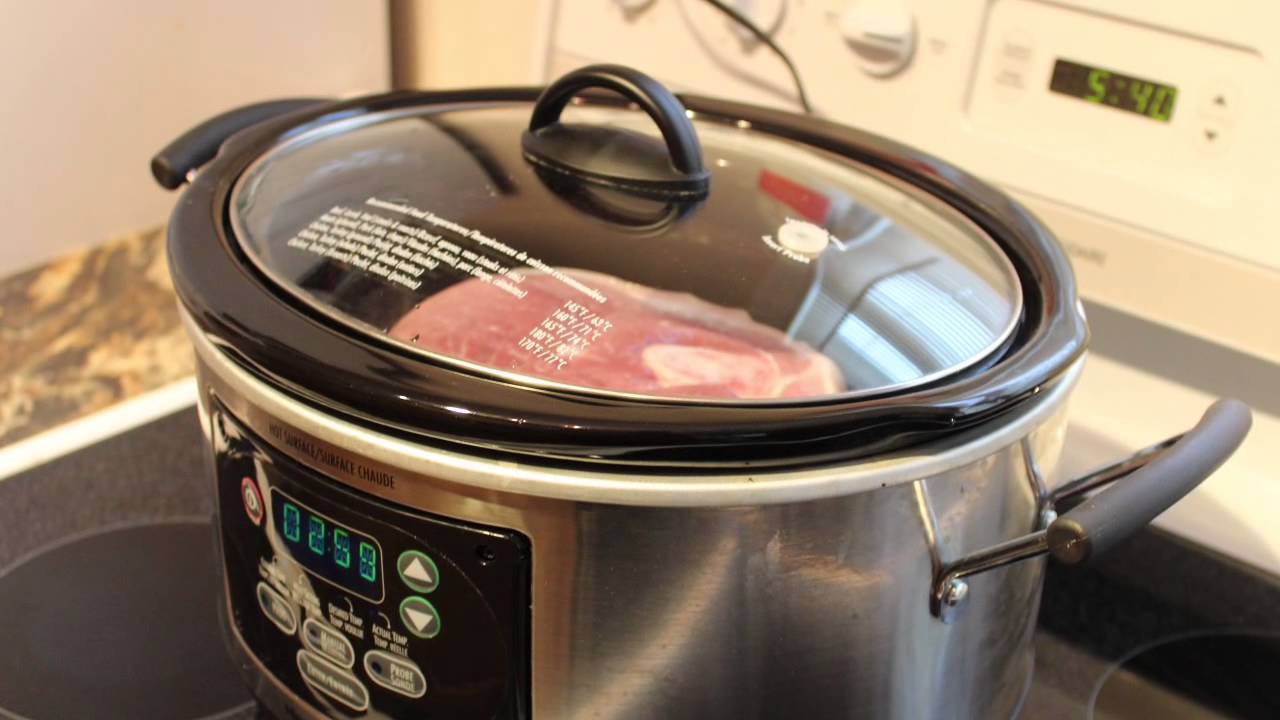


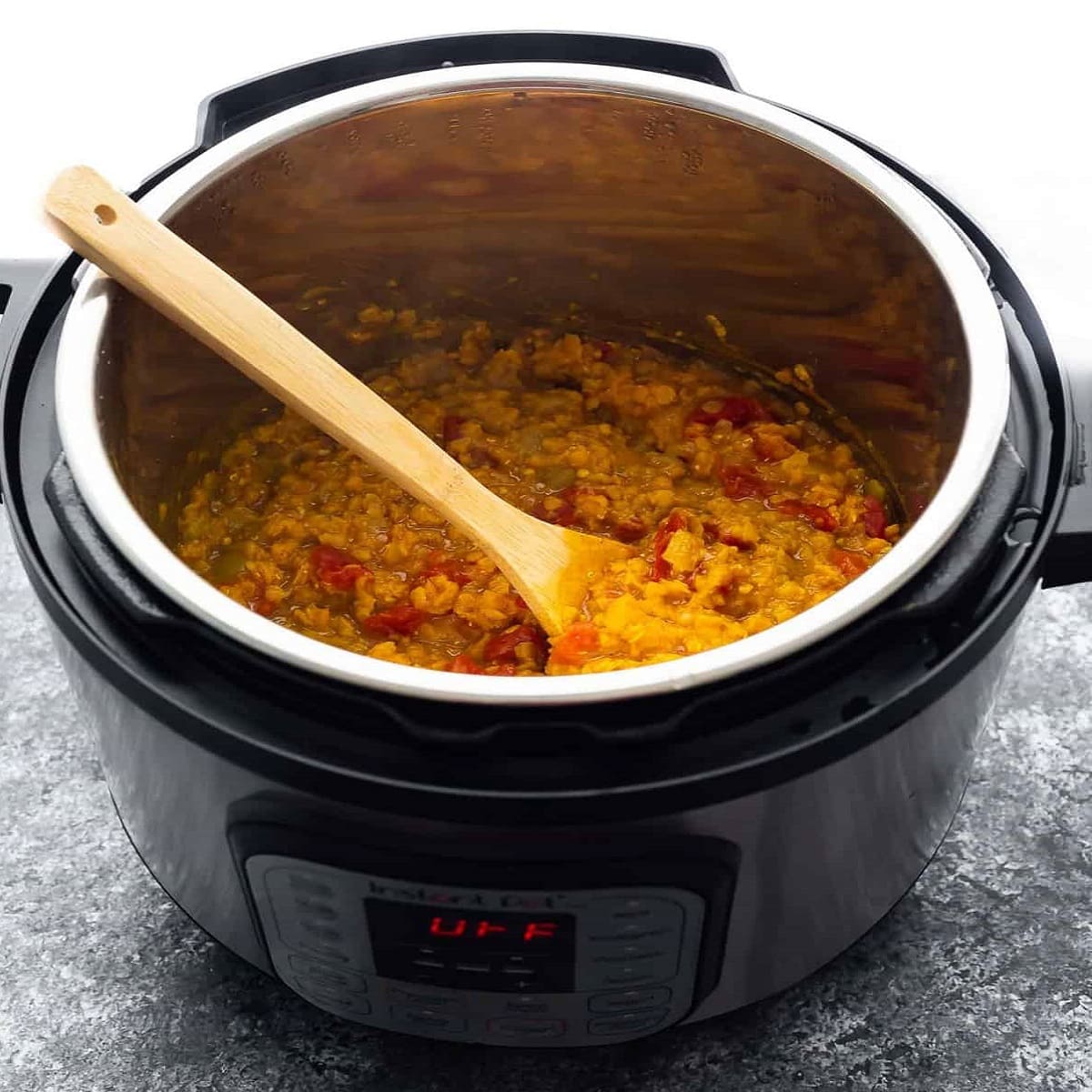


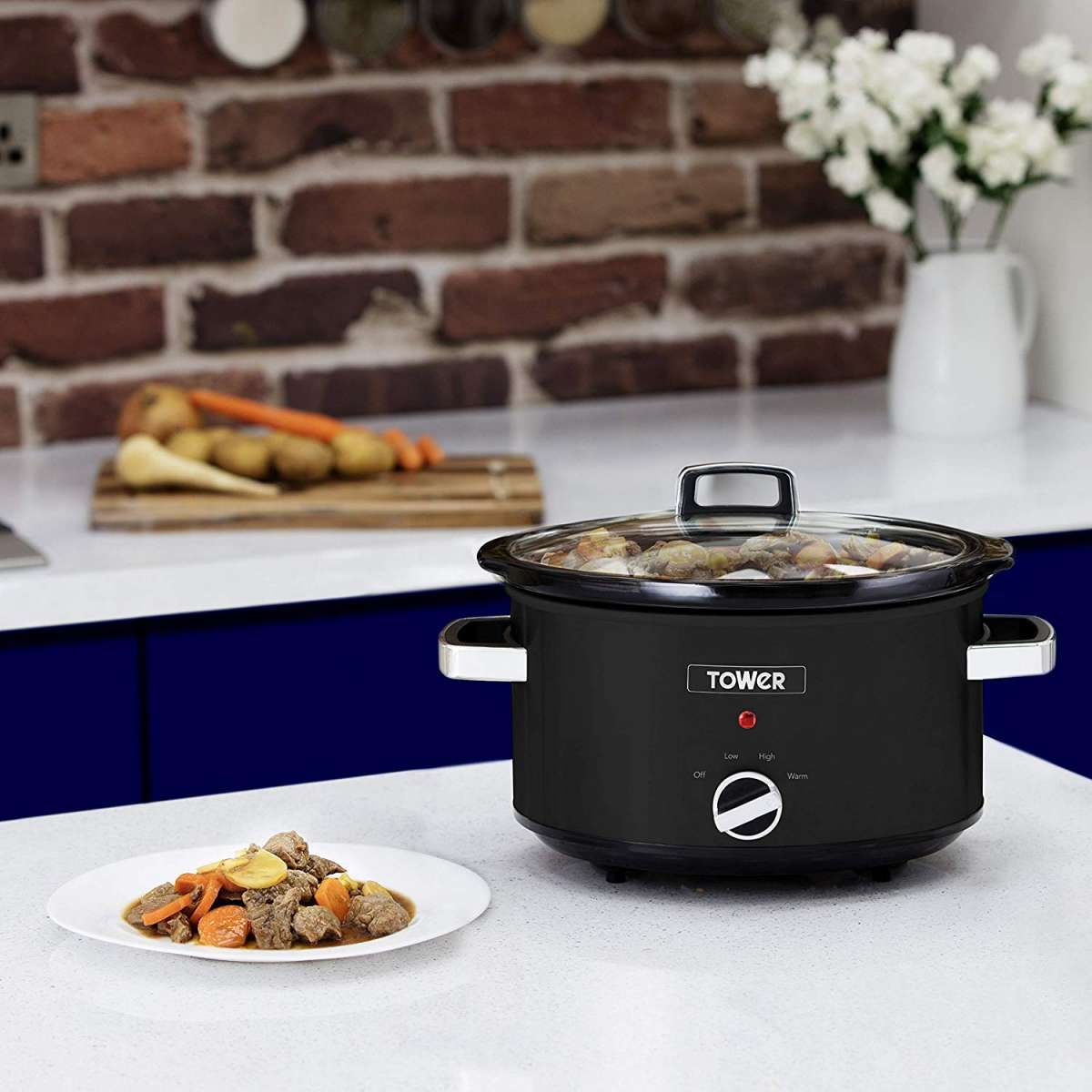
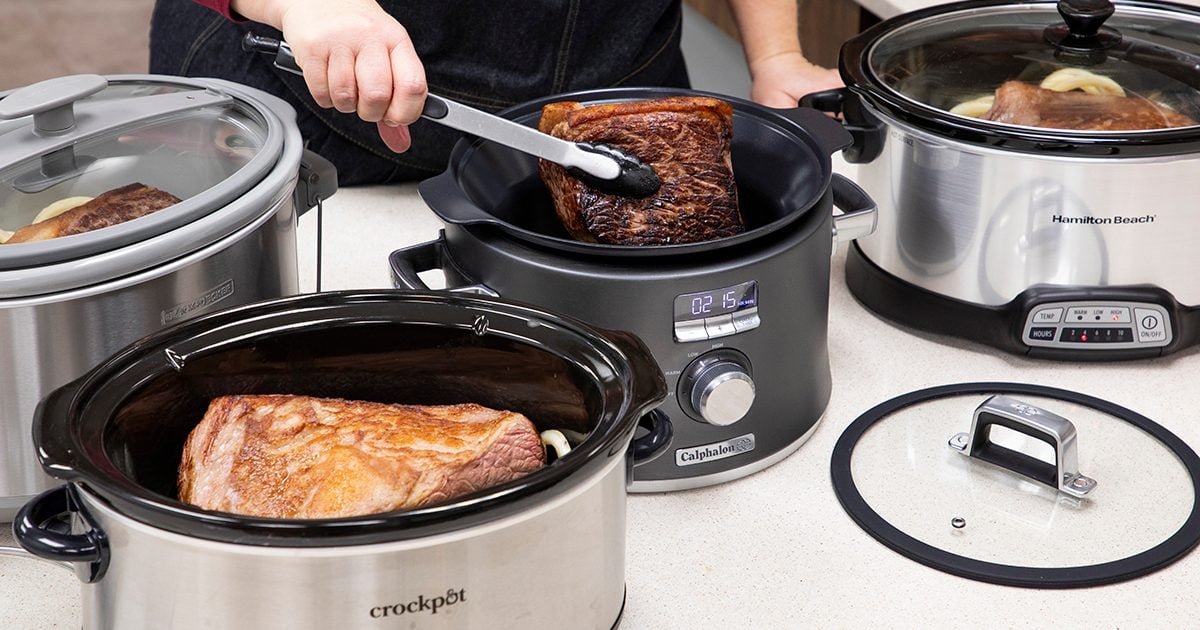
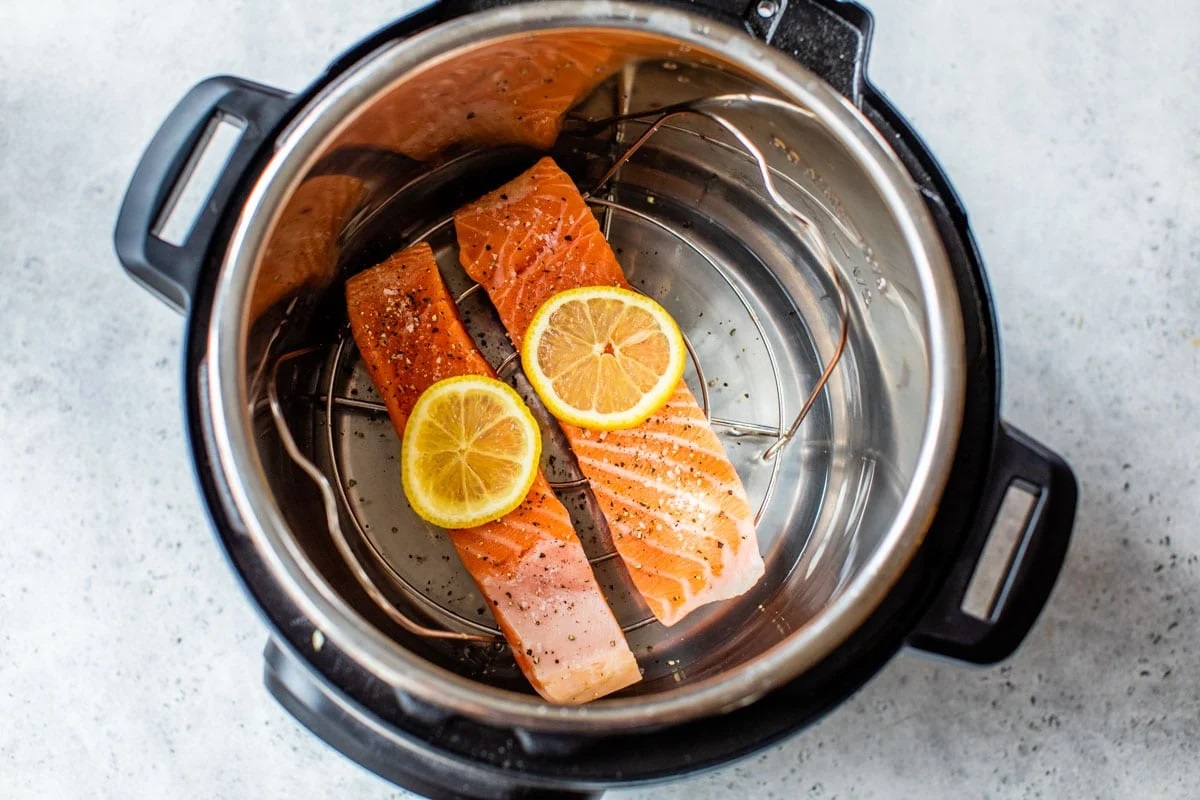


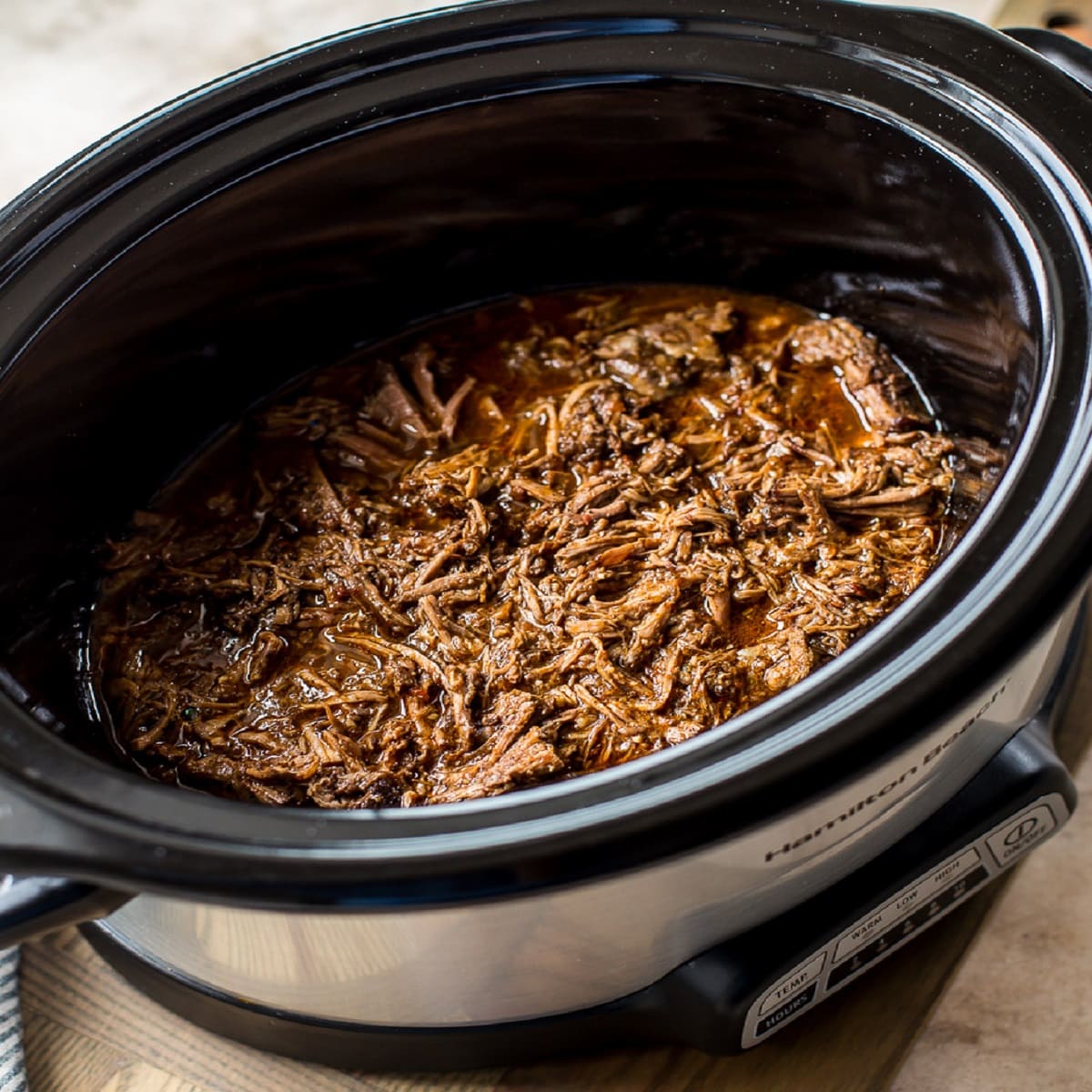
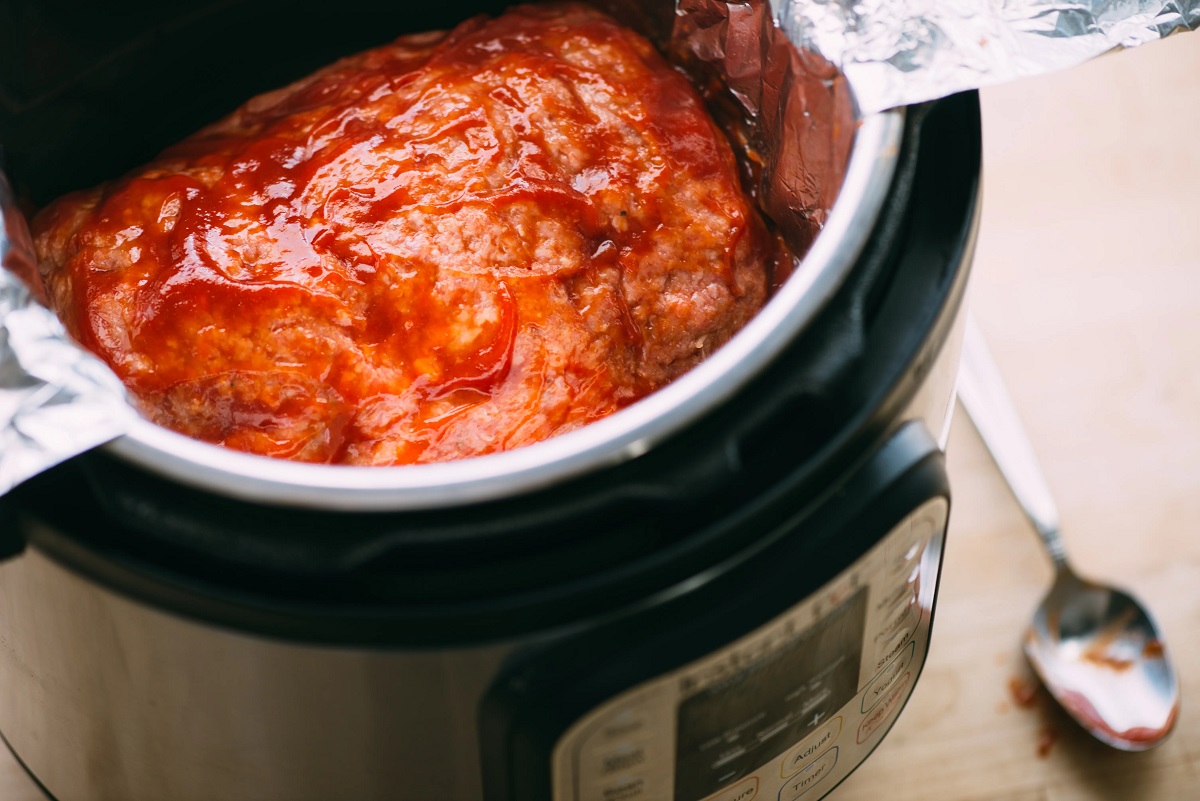

0 thoughts on “How To Cook Meat In A Slow Cooker”